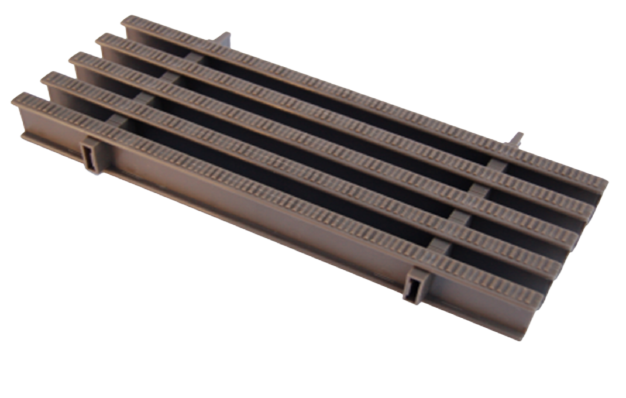Swimming Pool Grating Manufacturer &Supplier
Leading Manufacturer of Swimming Pool Grating, Swimming Pool Overflow Grating, Overflow Channel Grating & Overflow Grating Supplier in Ghaziabad, India.
Magline Pools offer swimming pool grating to our customers. We provide a wide selection of flexible swimming pool overflow grating tiles in a range of colors, sizes, and styles. All over the pool’s water surface, PVC swimming pool overflow grating has been erected on the side water channels. Swimmers’ jumping or swimming causes these overflows of water. Customers are in great demand for our swimming pool gratings. Additionally, our swimming pool gratings are available to customers at very low costs.
How do you clean pool overflow grating?
- Turn off the pool pump to prevent water flow.
- Use a net or skimmer to remove any debris floating on the surface of the water near the overflow grating.
- Use a pool brush to scrub the grating thoroughly to remove any dirt or algae buildup.
- Rinse the grating with a hose or pressure washer to remove any remaining debris or cleaning solution.
- Turn on the pool pump and monitor the water level to ensure that it does not overflow.
| Material | ABS |
| Usage/Application | Swimming Pool Grating |
| Color | White |
| Brand | DGM |
| Width | 15-20 inch |
| Length | 30-35 inch |
| Weight | 10-20 kg |
FREQUENTLY ASKED QUESTION
The price of PVC grating can vary depending on the size, thickness, and color of the grating. In general, PVC grating is less expensive than other types of grating materials such as metal or fiberglass.
On average, you can expect to pay between $2 to $5 per square foot for PVC grating. However, the price can be higher for custom or specialty PVC grating, or if you purchase from a high-end supplier.
It’s important to note that the cost of installation is not included in the price of the PVC grating. If you hire a professional to install the grating, the cost of installation will be an additional expense.
Swimming pools can be constructed using a variety of materials, including:
Concrete: Concrete is a popular choice for in-ground pools. It is durable and can be customized in a variety of shapes and sizes. The interior of the pool is typically coated with plaster, tiles, or other finishes.
Fiberglass: Fiberglass pools are pre-molded and installed in the ground. They are durable and require less maintenance than concrete pools. They are available in a variety of sizes and shapes, but are not as customizable as concrete pools.
Vinyl: Vinyl pools are constructed by attaching a vinyl liner to a frame made of steel, aluminum, or polymer. They are less expensive than concrete or fiberglass pools, but are not as durable and may need to be replaced every 10-15 years.
Natural Stone: Natural stone pools are constructed using stones such as granite, limestone, or sandstone. They offer a unique and natural look, but are expensive to construct and require a high level of maintenance.
Above-ground pools: Above-ground pools are typically made of materials such as steel, aluminum, or resin. They are less expensive than in-ground pools and are easier to install, but are generally not as durable or customizable.
Overall, the choice of construction material for a swimming pool will depend on factors such as budget, location, personal preference, and maintenance requirements.
The most common material used in pool construction is concrete. Concrete is a popular choice for in-ground pools because it is durable, long-lasting, and can be customized in a variety of shapes and sizes. The construction process typically involves digging a hole, installing a framework of steel bars, pouring concrete into the framework, and finishing the surface with plaster, tiles, or other materials.
While concrete pools can be more expensive than other types of pools, they offer several advantages, including:
Customizability: Concrete pools can be designed to fit any size or shape, and can be customized with features such as waterfalls, fountains, and custom lighting.
Durability: Concrete is a strong and durable material that can withstand the elements and last for many years.
Value: Concrete pools can increase the value of a property, as they are seen as a desirable feature by many homebuyers.
However, it’s important to note that concrete pools require more maintenance than other types of pools, as the surface can be prone to staining and cracking over time. Proper maintenance, including regular cleaning, sealing, and resurfacing, is essential to keep the pool in good condition.
The best pool surface material will depend on your specific needs and preferences. There are several options to choose from, including:
Pebble Tec: Pebble Tec is a popular pool surface material that combines pebbles and cement to create a durable and long-lasting finish. It is available in a variety of colors and textures, and is resistant to staining and chipping.
Quartz: Quartz is another popular pool surface material that is made by combining crushed quartz with resin. It is durable, stain-resistant, and comes in a wide range of colors and finishes.
Glass: Glass pool surfaces are made by melting down recycled glass and pouring it onto a pool surface. They offer a unique and eye-catching look, but can be more expensive than other materials.
Tile: Pool tiles are a classic choice for pool surfaces. They are durable, easy to clean, and come in a wide range of colors and patterns. However, they can be more expensive to install than other materials.
Vinyl: Vinyl pool surfaces are an affordable option that are easy to install and come in a variety of colors and patterns. However, they are less durable than other materials and may need to be replaced every 10-15 years.
Overall, the best pool surface material will depend on your budget, maintenance requirements, and aesthetic preferences. It’s important to do your research and consult with a pool professional before making a decision.


